The 10 Stages of Genocide
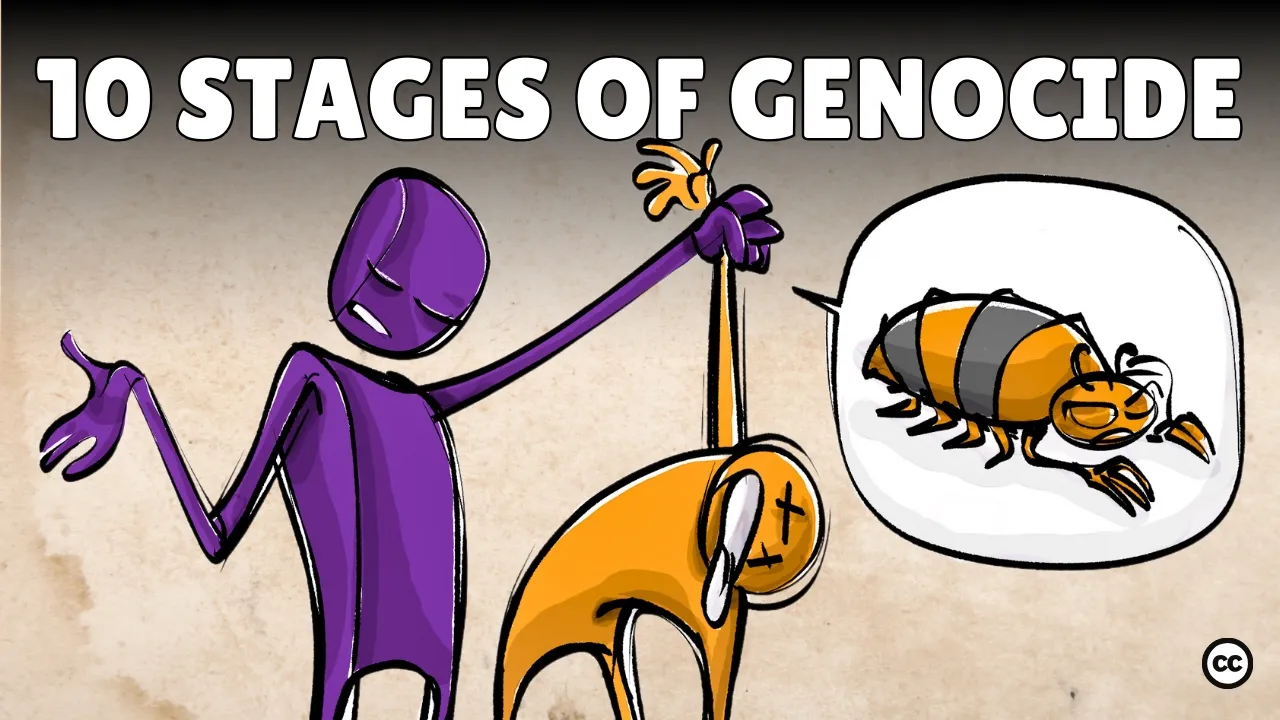
Genocide is a complex and horrific phenomenon that arises under specific social, political, and economic conditions. Understanding the stages leading to genocide can help us recognize warning signs and take preventive measures. Dr. Gregory Stanton developed a framework outlining the ten stages of genocide to illustrate this process.
Introduction to genocide
When living conditions worsen and the economy fails, people often seek reasons for their troubles. This vulnerability can lead to the rise of political extremists who scapegoat certain groups, promising that their elimination will resolve societal issues. This scapegoating can escalate into genocide, a deliberate and systematic annihilation of those deemed different based on race, religion, sexuality, or disability.
Stage 1: Classification
The first stage is classification. Extremists divide people into separate groups based on characteristics such as ethnicity or religion. This division fosters an us-versus-them mentality, making it easier to blame specific groups for societal problems.

Stage 2: Symbolization
The second stage is symbolization. This involves assigning symbols or names to members of the marginalized group, which helps to clarify societal divisions. The goal is to visually distinguish who belongs to which group.
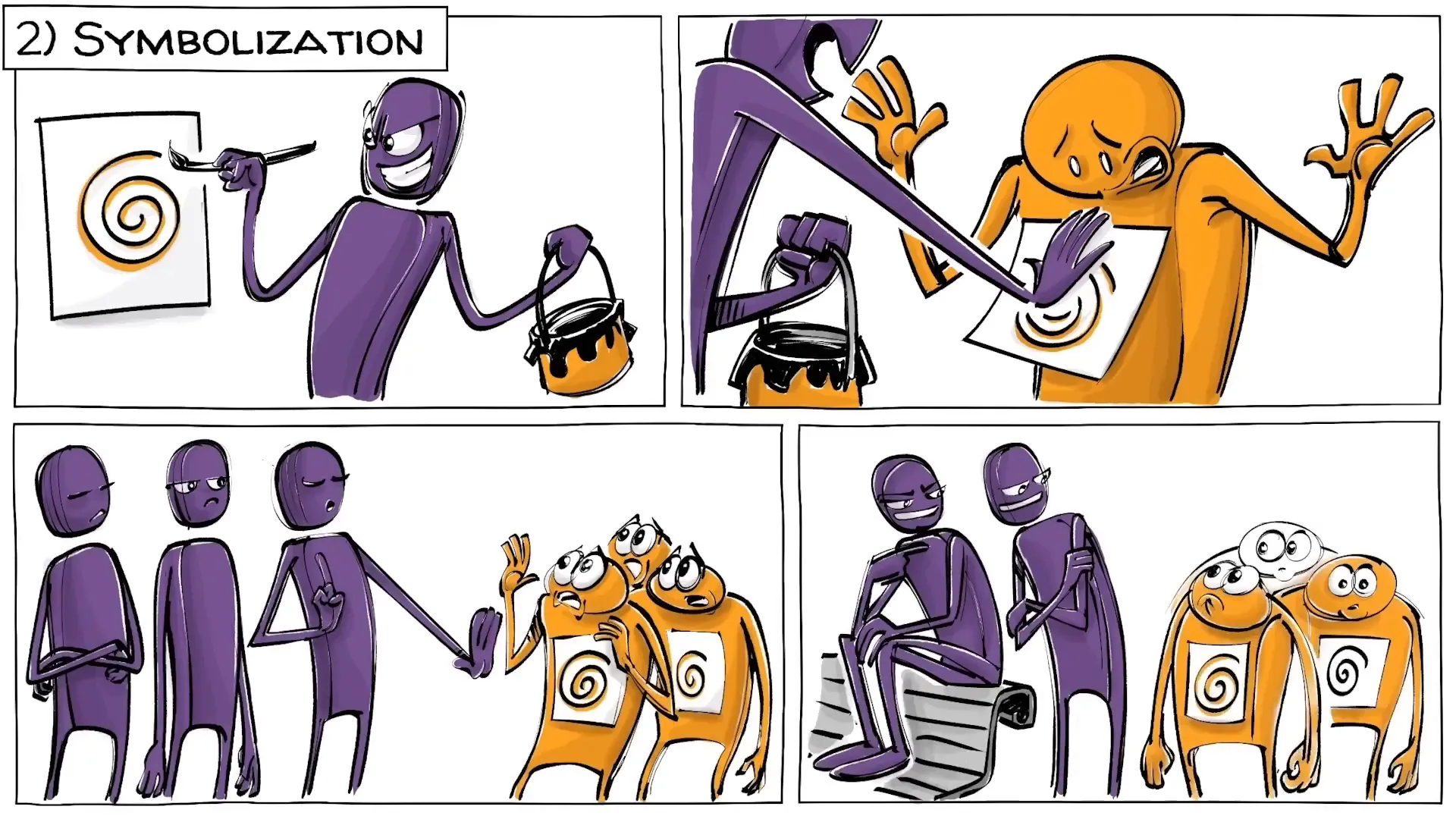
Stage 3: Discrimination
Stage three is discrimination, where the dominant group uses its power to deny the marginalized group certain rights or privileges. This often manifests in new laws that restrict freedoms, leading to increased bullying and deepening societal divides.
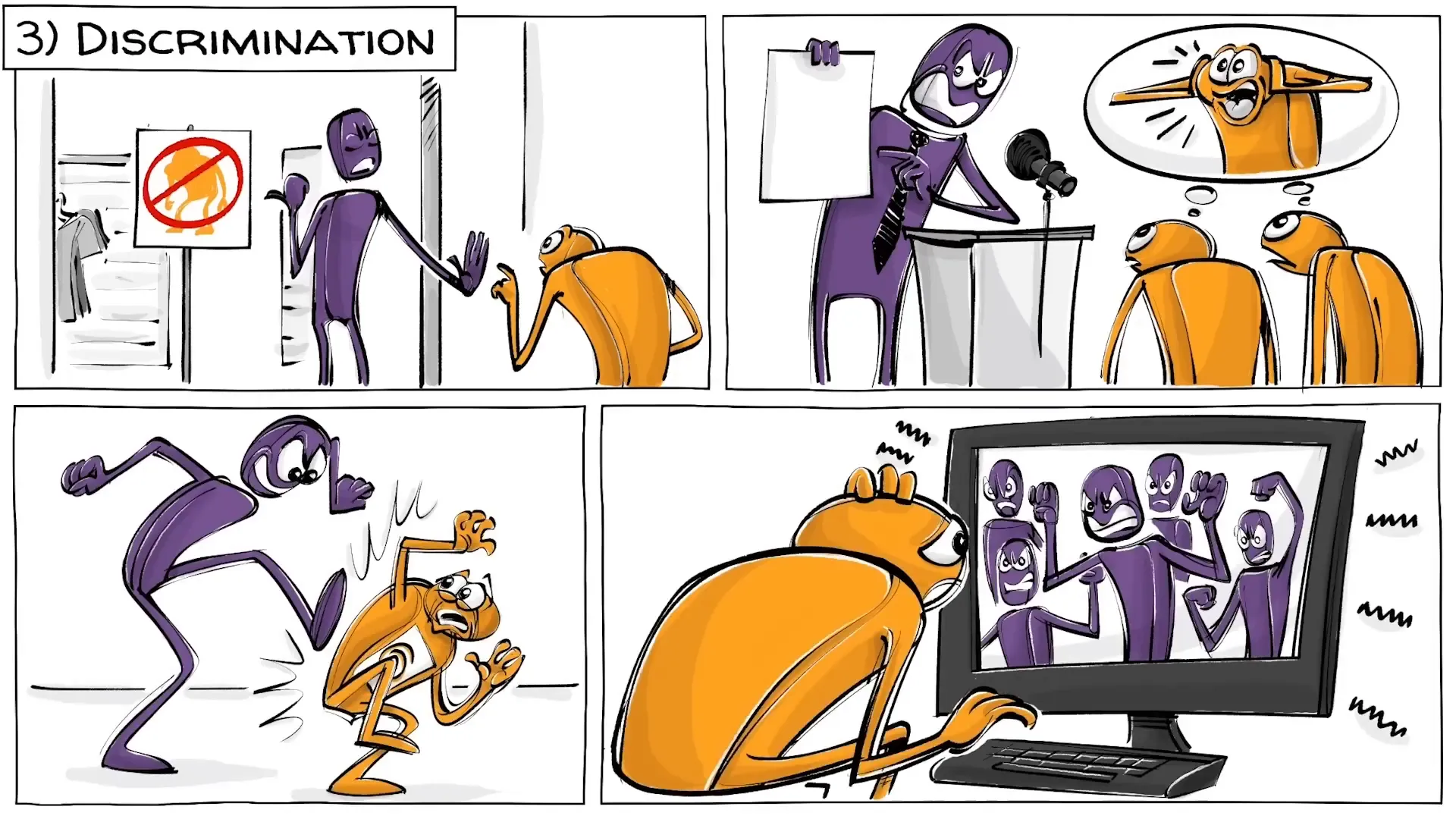
Stage 4: Dehumanization
The fourth stage is dehumanization. At this point, the targeted group is portrayed as less than human, often compared to animals or diseases. This stripping away of human qualities makes it easier to justify violence against them.
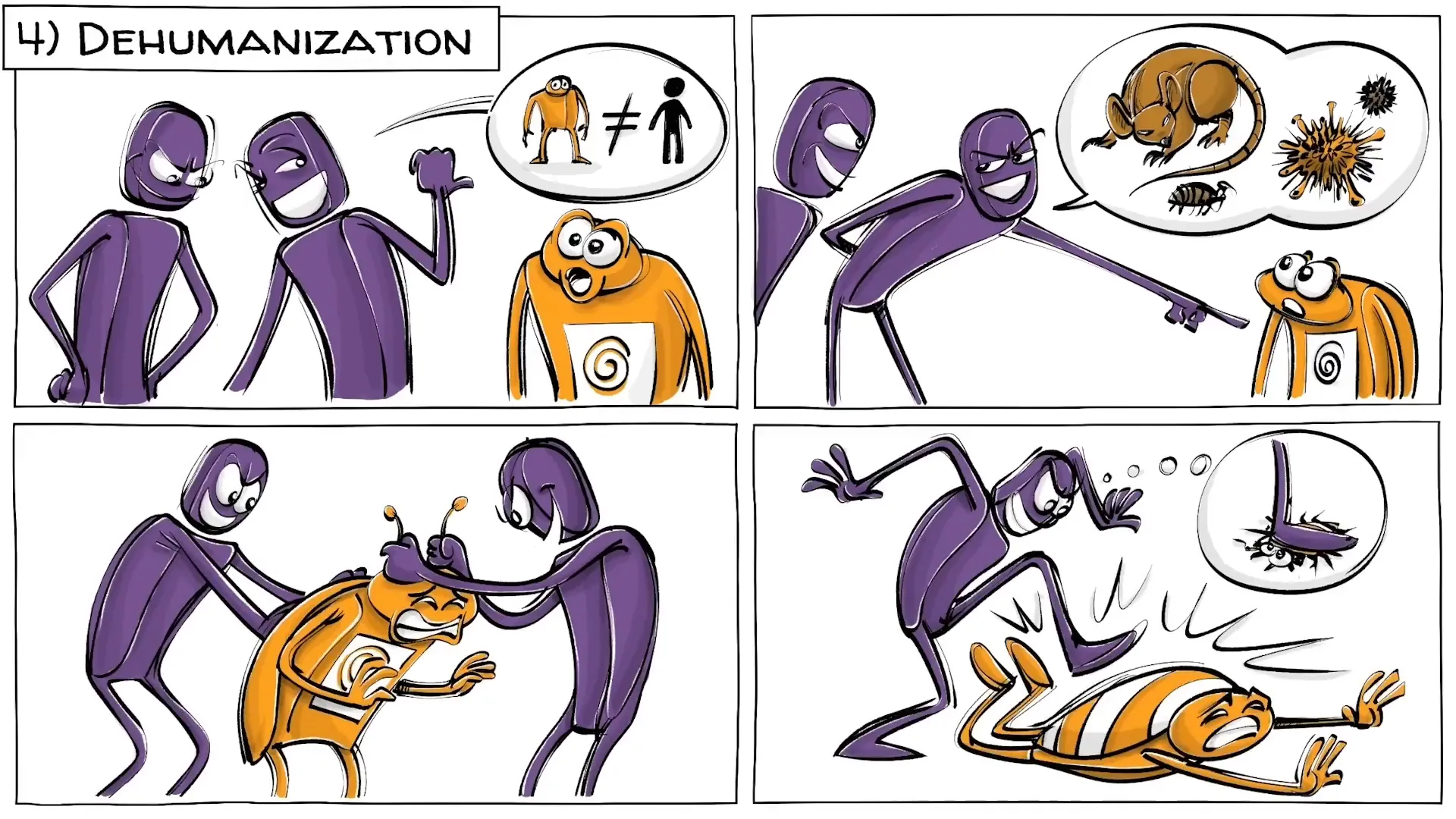
Stage 5: Organization
Stage five involves organization. This can include violent mobs tolerated by the ruling class or the formation of state-sponsored militias. Perpetrators may begin to carefully plan the next steps of genocide during this stage.

Stage 6: Polarization
In the sixth stage, polarization occurs. Extremists further demonize the targeted group and attempt to divide society completely, demanding that everyone pick a side. Moderates who wish to ease tensions are often silenced or labeled as enemies.
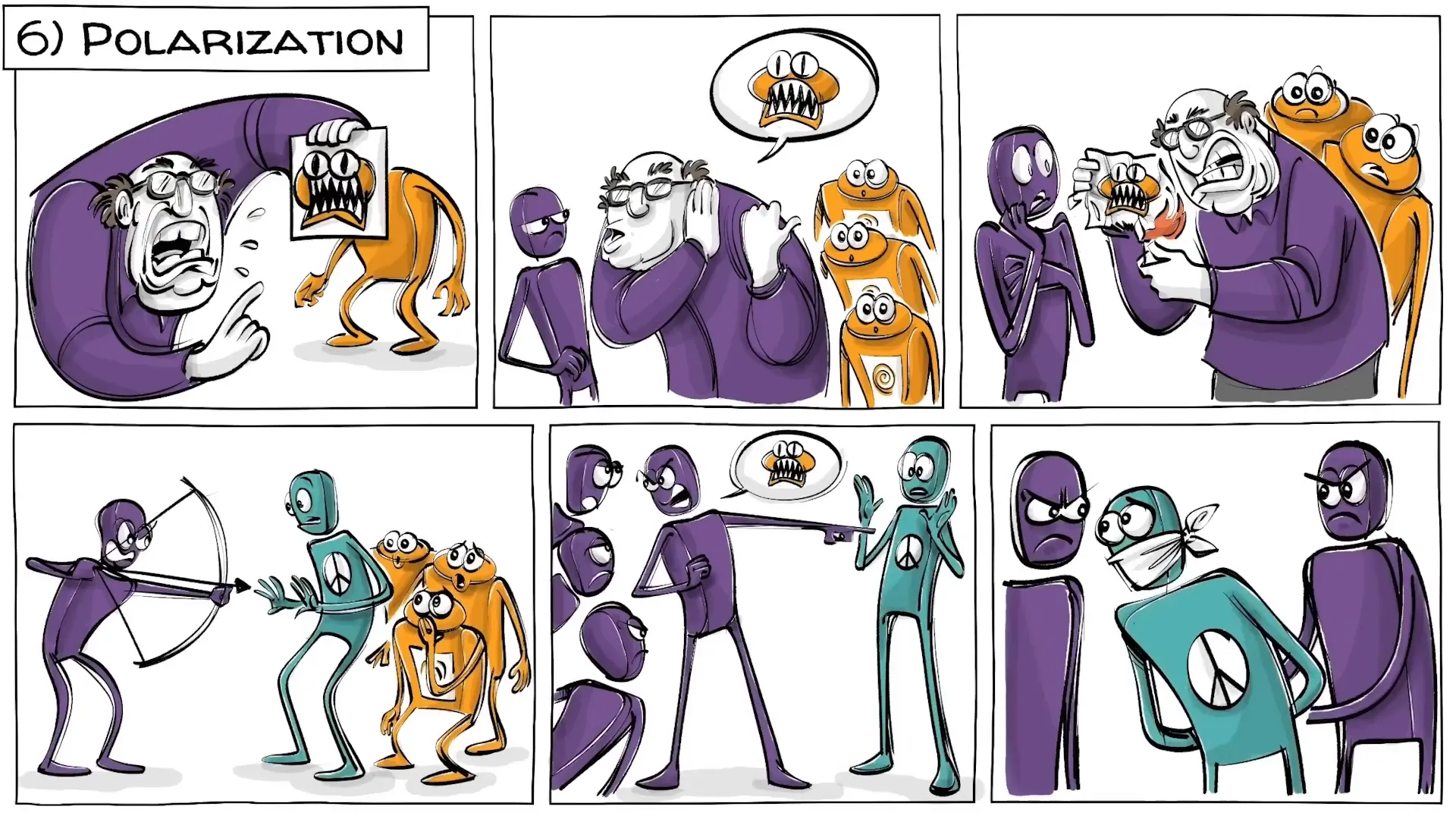
Stage 7: Preparation
Stage seven is preparation. Here, perpetrators plan for mass murder, identifying victims by name or number, locating their residences, acquiring weapons, or constructing facilities to assist in their efforts.
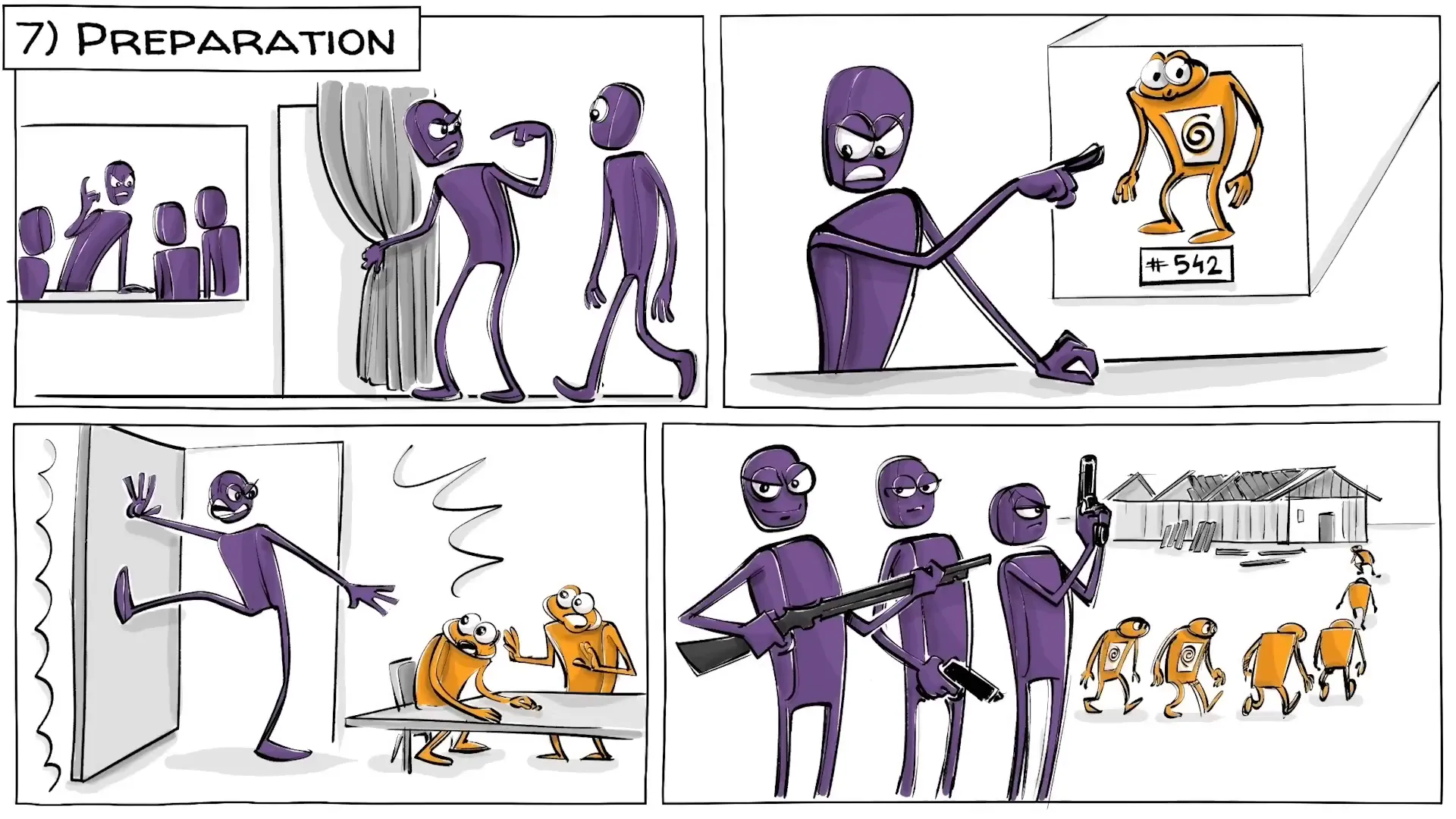
Stage 8: Persecution
The eighth stage is persecution, where violence escalates against the targeted group. Systematic harassment, displacement, and other forms of abuse occur, often disguised as security measures.

Stage 9: Extermination
Stage nine is extermination, marking the beginning of mass killings. The perpetrators view their victims as less than human, believing they are "cleansing" the world of an undesirable element, which justifies the use of extreme violence.
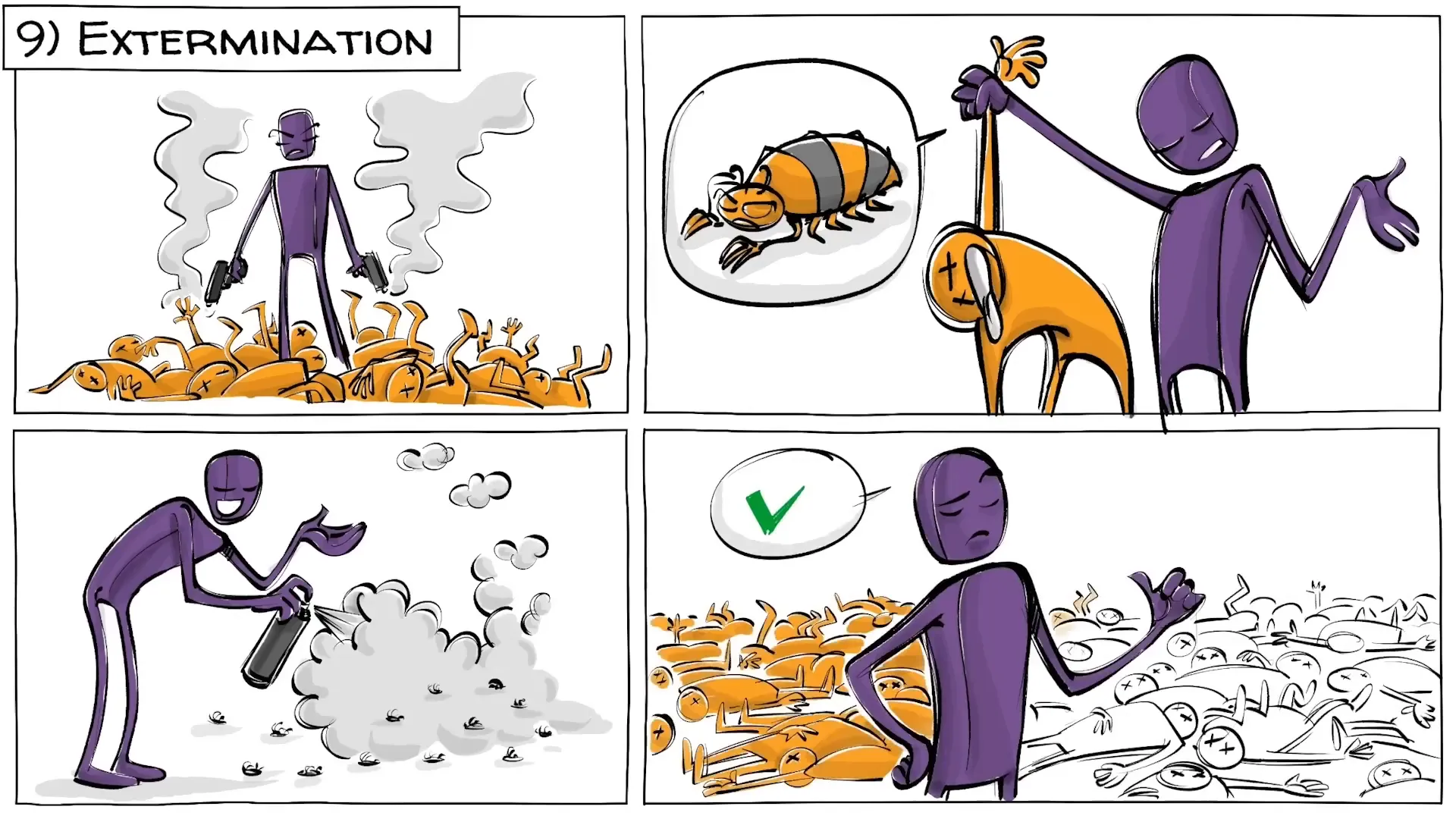
Stage 10: Denial
The final stage is denial. Those responsible for the genocide deny their crimes, destroy evidence, blame the victims, and attempt to rewrite history to justify their actions as necessary for the greater good.
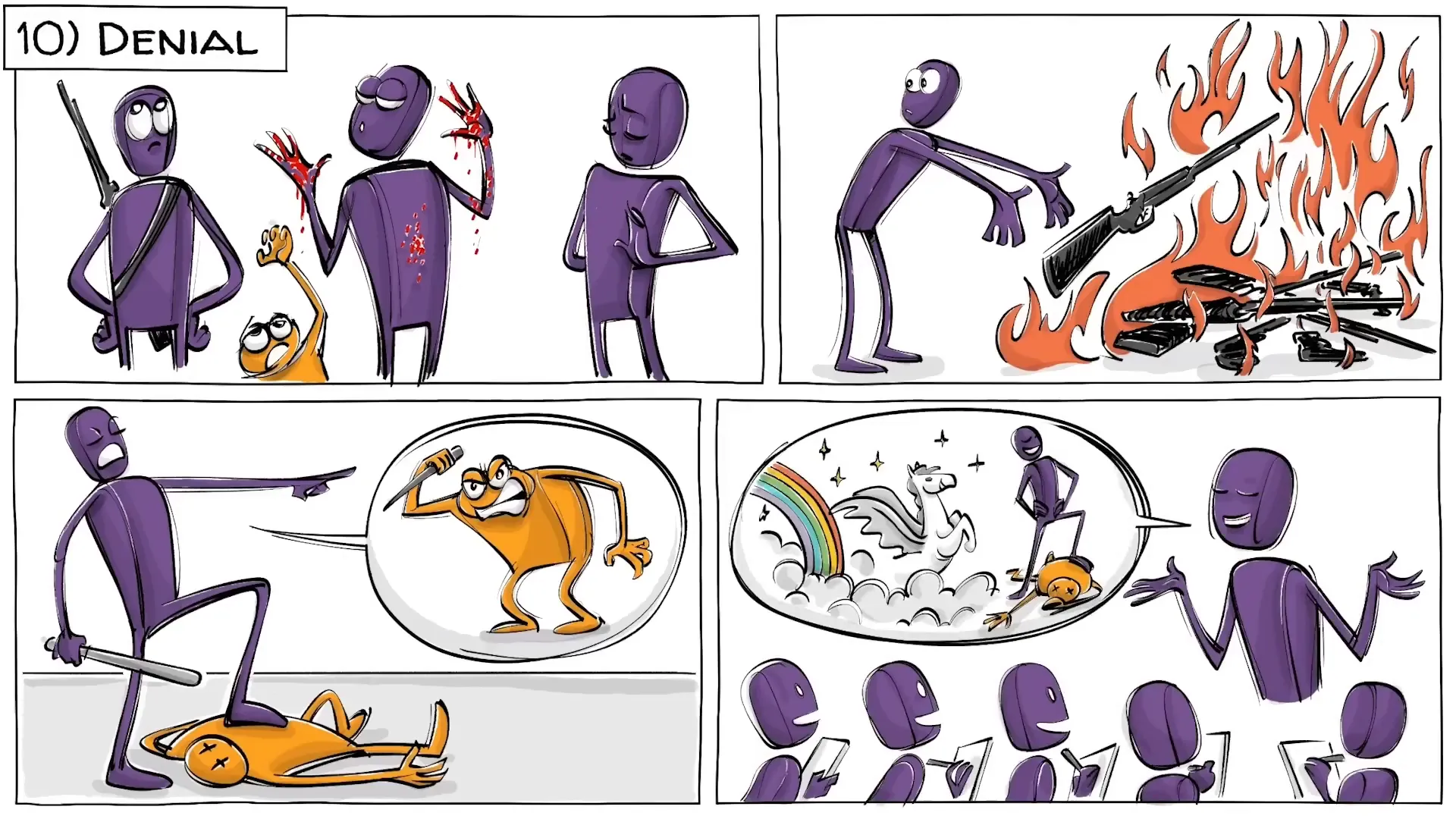
Aftermath and accountability
In the aftermath of genocide, it is crucial that the criminals are held accountable and that the trauma experienced by survivors is addressed. Only then can society begin to heal and reunite. The ten stages of genocide may not occur in a linear fashion; they can happen simultaneously, making it essential to remain vigilant.
Dr. Gregory Stanton
Dr. Stanton, who observed these stages, has suggested preventative measures to combat each stage. He believes that only international intervention can ultimately stop such disasters. Historical instances in Germany, Cambodia, and Rwanda demonstrate that help often arrives too late, reinforcing the need for proactive measures.
What do you think?
Is knowledge enough to prevent genocidal events? If not, what other measures can we take to avoid the next human catastrophe? Understanding these stages can help us recognize when they are unfolding and take action to prevent further atrocities.